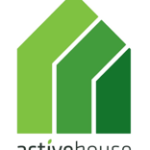Tradium Broen

The project is a conversion and extension of the existing administration of the Tradium institution, which is one of the largest combined technical and business colleges in Denmark. The extension is approximately 400 m2 and developed as an Active House-project, with a special focus on the indoor climate and the environmental parameters.

Comfort:
The office spaces are placed along the western facade of the building to reduce the solar heat gain during office hours. This, together with a lamella overhang, makes it possible to create big windows towards the green outdoor areas. The daylight factor is high due to this, reducing the need for electrical lighting. Furthermore, the sunlight provision is above 10% of the probable sunlight house.
The ceiling is a ventilated system, securing an effective control of the indoor climate. Fresh air is applied through a relatively big area of the Troldtekt woodcrete ceiling plates at low pressure to reduce both energy consumption and drag. This is not used as a cooling system for the building, and even though there is no mechanical cooling, the building design allows for a reasonable comfort temperature in the category II (summer) and IV (winter).

Environment:
A sustainable action regarding the wooden materials was specified in the supply description:
- all wood is FSC-certified, only exception are the door leaves
- woodcrete ceilings are FSC- or PEFC-certified
- wood used in the windows is FSC-certified
- wooden strips for interior cladding are treated with linseed oil
The above actions result in 50% of all the wood used for building materials being FSC- or PEFC-certified.
For other building materials, the reusability factor is the focus for the constructions. The foundation and the floor slab score high values in the LCA-analysis, as all steel and concrete are recyclable. In total, the recyclable content represents 80% of the materials.
As a material resource for the operation of the building, the fresh water consumption is reduced by quite simply choosing faucets and flush valves that consume less water.
Energy:
For the optimization of the energy consumption, the building envelope is generally designed to reach higher standards than specified in the building regulations.
- Exterior walls have a U-value of 0,12 W/m2K
- Windows and doors have a U-value of 1 W/m2K
- Roof has a U-value of 0,09 W/m2K
- Slab has a U-value of 0,08 W/m2K
The above values result in a generally lower heat loss than required by the building regulations.
Conclusion:
As it is often the case when working with sustainability, many of the sustainable actions regarding all three of the included parameters in the radar, also contain an economical advantage. This is obvious regarding, for example, the fresh water consumption or the energy demand. As the project is a pioneer of its kind, the first Active House-classified institution, the aim of the project has been to push the boundaries for sustainable architecture, while proving that it is actually fairly easy to improve sustainability within the construction industry. There are plenty of tools available, and the Active House Radar makes it easier and more intuitive to integrate them in the design process!




